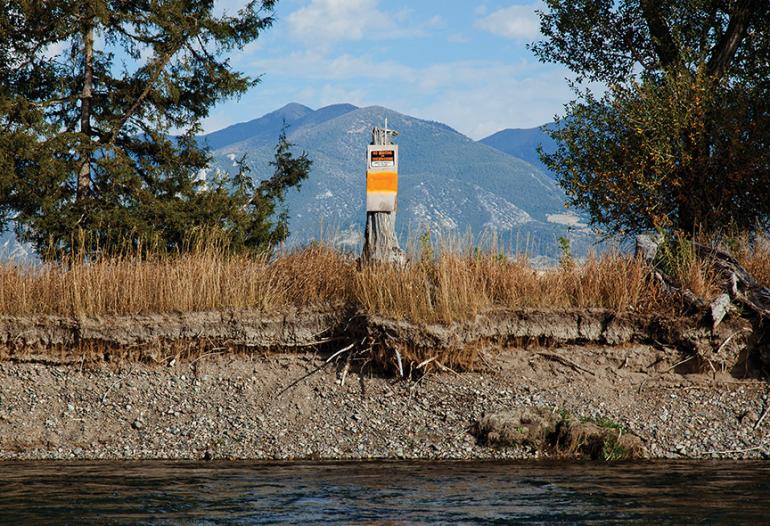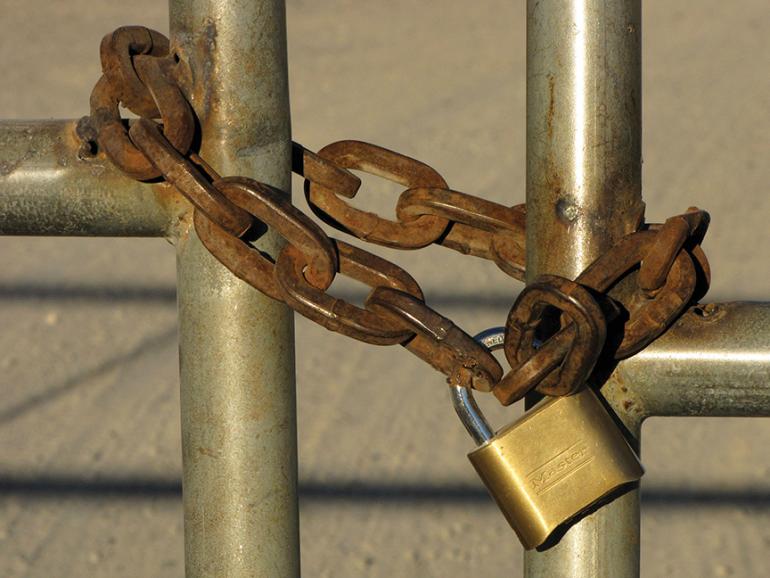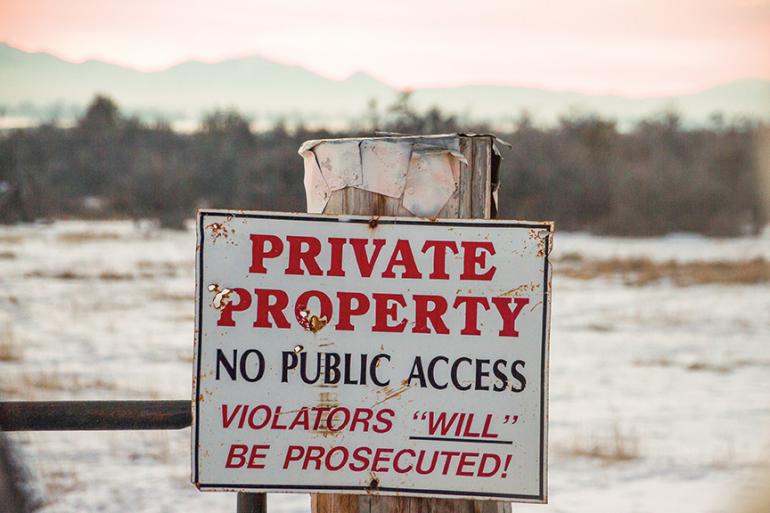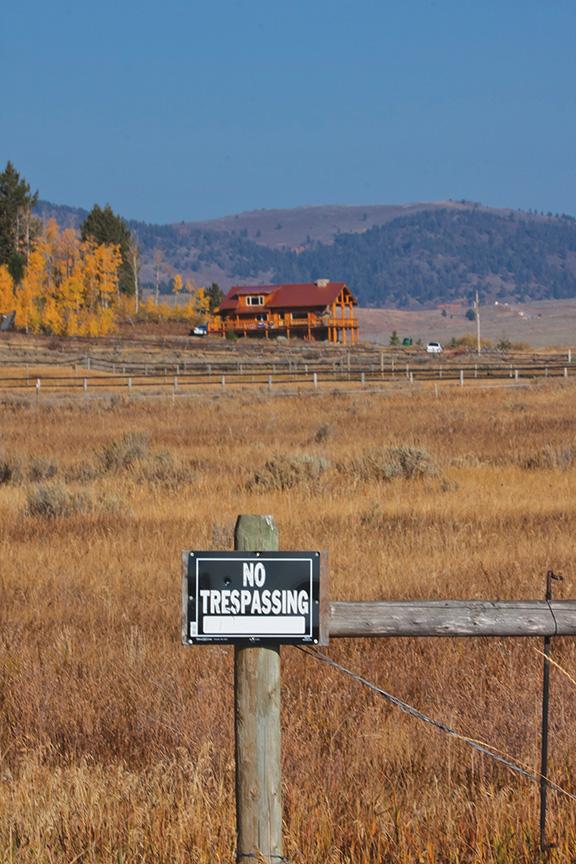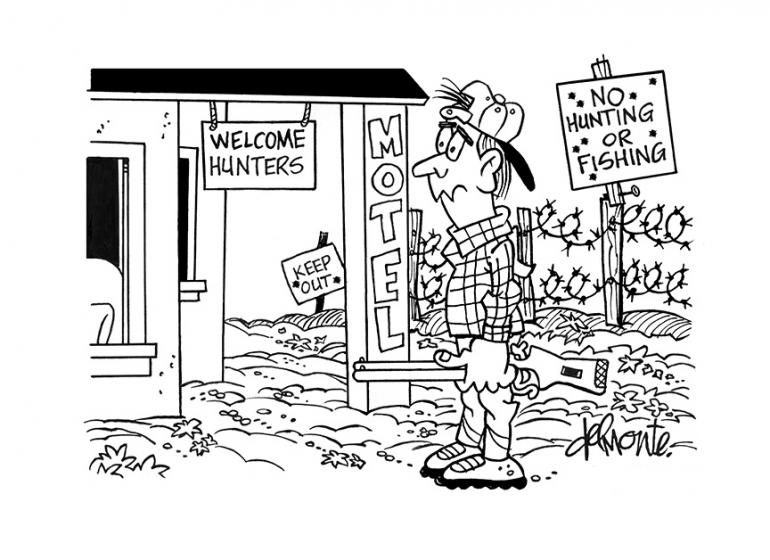Neofeudal Montana
A land and people being conquered by money.
When driving the backroads of Montana, opulence is not a word that comes to mind to describe pastoral scenes of hayfields, barbed-wire fences, and black Angus grazing in grassy pastures. To the naked eye, this is pure Montana, a traditional rural landscape of family farms—except that it isn’t. Montana is being overrun by the super-rich: multi-millionaires and billionaires who not only buy up the land for private fiefdoms, but erode our freedoms at the same time.
Meet the Neighbors
Montana is part-time home to countless multi-millionaires, yet it is the billionaires that make the greatest waves—gobbling up ranches and farms to build private estates for themselves and their hunting and fishing buddies. For the most part, these are not entirely bad people. For example, Ted Turner, founder of CNN, owns four ranches in Montana, totaling almost 154,000 acres. Highly conservation-oriented, Turner has protected much of his land with conservation easements to prevent future development. However, he also went against longstanding Montana traditions by posting No Trespassing signs to keep the common folk off his estates. Turner arguably set the precedent and created the model for other billionaires to follow.
Downstream from Turner’s Snowcrest Ranch, James Cox Kennedy owns 30,000 acres, including eight miles along the Ruby River. Kennedy once served as chairman of the Colorado Division of Wildlife and on the board of Ducks Unlimited. He has donated heavily to conservation projects, mostly benefiting waterfowl and wetlands. But Kennedy has also waged a long-running legal battle against Montana’s Stream Access Law. If it were up to Kennedy, he would own the river, and nobody else could use it.
Downstream from Kennedy, the Ruby spills into the Beaverhead, and shortly thereafter into the Jefferson, where New York billionaire Hamilton James bought up a 38,000-acre estate for his personal recreational fiefdom. Like Turner and Kennedy, James is a conservationist, a trustee of the Wildlife Conservation Society, and an advisory-board member of the Montana Land Reliance, an organization working to protect land with conservation easements. Like his fellow billionaires, James chose to block traditional public access to private lands, and like Kennedy, James isn’t a big fan of public access, even where the public has a legal right.
Through his company, SRI River Holdings, James is pushing a land swap with the state to transfer 600 acres of state-owned land in exchange for 861 acres of SRI land. The latter comprises two parcels that will improve access to the Big Hole River and the Beaverhead-Deerlodge National Forest—which is why the deal is supported by Skyline Sportsmen, a hunting-access group based in Butte. However, the 600 acres of state land include 80 acres of prime riverfront on the Jefferson River: the Beaver Chew campsite, so named because Meriwether Lewis left a note there for William Clark, but a beaver felled the tree it was posted on. This site is thus an important historical stop on the Jefferson River Canoe Trail segment of the Lewis & Clark National Historic Trail. The trade, as it stands, eliminates essential public land on the Jefferson, and pits one public-access group against another.
Rounding out the list of Montana’s most notorious billionaires are Dan and Ferris Wilks, who made their billions in the fracking industry and quickly consolidated numerous ranches and family farms into a giant, 360,000-acre private estate, more than twice the size of Turner’s holdings in Montana, and half the size of Rhode Island. Like other billionaires, the Wilks brothers closed the land to traditional access and have tried to expand their grasp to public lands—they sought to obtain prime elk habitat in the Durfee Hills through a land swap with the BLM, which was successfully shot down by area hunters. The Texas duo responded to the defeat by erecting a fence around the Durfee Hills and posting No Trespassing signs.
Land of the Lost
Before the millionaires and billionaires came, Montana belonged to everyone. Ask anyone middle-aged or older about growing up here, and most will reminisce about rambling the countryside, hiking, fishing, hunting, exploring, and crossing fences regardless of property boundaries. Freedom to roam has been a fundamental right for Montanans since before statehood, and landowners were typically pleased to see people engaged in healthy recreation on their farmlands.
Unfortunately, as wealthy newcomers moved into the state, they bought land and posted boundaries with No Trespassing signs. Miles out in the country, far from the nearest farmhouse, these signs appeared, threatening prosecution against anyone brazen enough to step foot on the overlords’ sacred ground.
At first the fiefdoms were few and far between: annoying, but not totally threatening. After all, Montana is a big place. However, the super-rich expanded their holdings, and new overlords joined them, gobbling up more and more land. Acre by acre, we lost access, and with it, part of our identity. Montanans have always cherished a deep connection to nature. Yet, without the right to roam, children grow up on roads, lawns, and electronics. Disconnected from nature, people lose respect for the land, making them more likely to leave a trail of litter, graffiti, and vandalism. It isn’t the Montana way.
My first encounter with neofeudalism consisted of a gate plastered with No Trespassing and Keep Out signs. It was April 1988, and my girlfriend and I were several days into a 500-mile walk across Montana. We started at my grandmother’s house in Pony and walked cross-country to Three Forks where the Jefferson, Madison, and Gallatin rivers come together to form the Missouri River. We followed railroad tracks downstream along the Missouri to Sixteen Mile Creek, planning to retrace the old railroad bed upstream east toward the Montana prairie. The railroad company had gone bankrupt in the 1970s, their easement abandoned and the land reverting to private ownership. That wasn’t a problem, but the No Trespassing signs were. After assessing our situation, we concluded that we had no alternative. April is still somewhat wintery in Montana, and Sixteen Mile was the only reasonable path to cut through the mountains to the prairies beyond; so over the gate we went, into Turner’s Bar None Ranch.
As it turned out, Sixteen Mile was one of the most amazing places we encountered in our walk across Montana. The creek ran high and muddy, and it would have been difficult to ascend the narrow, winding canyon, except that the railroad bed included wooden trestles over the water and multiple tunnels boring through the canyon walls. We saw 28 elk and 250 deer in a single day.
Although it is illegal to privatize wildlife in Montana, some of these enormous ranches encompass enough land to effectively own the wildlife within. For the low, low price of $15,000, private parties can hunt elk on Turner’s ranches. In our journey, we did cross paths with Turner’s land manager, but much to his credit, he simply waved us onward.
I’ve never been wholly anti-Turner. After all, he’s protected countless acres in perpetuity from subdivision and development—that’s good news for wildlife habitat and the wide-open vistas behind our unofficial slogan, “Big Sky Country.” Turner also raises bison, arguably helping to bolster the cause of an animal so iconic to our country that Congress has named it our national mammal. In addition, Turner donates money to numerous causes, and he supports local community programs with small grants. A grant from Turner provides modest support ($1,800/yr.) for my own work teaching wilderness-survival and nature-awareness skills to schoolkids.
Turner’s ranches were always far enough away that I wasn’t directly confronted with the loss of access myself. It wasn’t until other millionaires and billionaires started claiming the land in between that I really began to notice the squeeze.
The Price of Submission
Freedom to roam goes hand-in-hand with respect for the land and landowners. Those who remember having that freedom were unlikely to leave gates open, cut fences, litter, or vandalize properties. Those behaviors are symptoms of bored, disconnected, or disgruntled citizens lacking an ethic of stewardship. Montanans can restore the right to roam, and with it, we can cultivate a renewed sense of reverence for the land and respect for those who own it.
The saddest part about the rise of neofeudalism in Montana is that many residents are reduced to a peasant class working in servitude to these out-of-state overlords. In the past, people could go anywhere, but now they’re only allowed onto the land as servants to vacuum carpets, mow lawns, and patrol the grounds.
In essence, we’ve prostituted ourselves to the wealthy for a paycheck. Some of us bulldoze roads deep into pristine landscapes, building mansions that are maintained and heated all year long, yet seldom occupied. Others build fences where none existed before, installing the No Trespassing signs that will keep themselves out as soon as the job is done. It seems like a good deal, getting paid by the filthy rich to plow a driveway or install a security gate, but the price is that we are no longer a free people. We are increasingly indentured to absentee landowners who use the people of Montana and then threaten to turn the police upon us if we violate their airspace by walking through woods that they themselves will likely never visit.
This serfdom isn’t limited to merely doing chores for the billionaires. Land-swaps, for example, command the time and energy of dozens of people, including common citizens who must clear their own schedules to deal with the issues.
Land trades are the billionaire’s game of Monopoly. Rather than get their own hands dirty, a landowner typically hires minions to do the dirty work to push a land-swap proposal through the public scoping process, often enlisting the real-estate and consulting services of local companies. Like anyone indentured to the mega-rich, these folks perceive servitude as opportunity. They may purport to favor a collaborative process to seek out win-win solutions, but in order to serve the overlords, they are also willing to pit Montanans against Montanans.
A billionaire can potentially push a land-swap deal with only one or two hired guns to move it forward, because public officials do much of the actual work and taxpayers foot the bill. Public employees effectively work for the landowner, calculating land values, holding public hearings, and soliciting public comments. If a trade goes through, then the state or federal government may gain a few acres of land, “of equal or greater value,” but there is no accounting for the cost of employee time to administer the land swap.
Above all, it is the common folk that succumb to the billionaire’s agenda in these land-swap proposals, sometimes in favor, often opposed, and sometimes compelled to face off against each other. In order to protect their public lands, ordinary people must set their lives aside to attend meetings, get educated on the issues, and make informed public comments. Mounting a successful campaign can consume months of time and considerable expense for such things as babysitters, fuel, food, and printing costs. Win or lose, nobody gets compensated for their time and expenses. It is the billionaires’ game of real estate. They decide when they want to play, and in doing so, they dictate the schedule of affected citizens for months or years.
Billionaires play from afar, willing to consume everyone’s time but their own. That was evident at a public hearing on James’s land-swap proposal on the Jefferson. The meeting consumed the time of our state’s highest public officials, including the governor, attorney general, secretary of state, and other state employees. Also attending were concerned citizens who set aside their day to drive to Helena on icy roads to testify. In effect, every person in the room was there in servitude to the neofeudal overlord who didn’t bother to show up himself.
Montanans First
The problem in dealing with people with too much money is that they are accustomed to getting anything they want. On the surface, they may seem like genuinely nice people: benefactors who donate funds to local communities and environmental causes.
But everything has a price.
Kennedy, for example, is a big-time donor to Ducks Unlimited, which greatly benefits waterfowl and waterfowl hunters. Yet, he has also funded over a decade of litigation against the state of Montana to limit public access to the Ruby River where it crosses his estate. Kennedy is a media mogul, part of the Cox family that controls the Atlanta Journal-Constitution (AJC), plus numerous other daily newspapers, television stations, and dozens of radio stations. He has been described as “the most hated person in Montana,” and his crusade against stream-access rights is constant fodder in Montana newspapers. Yet his media audience in Georgia has never heard about Kennedy’s doppelganger life in Montana, and the AJC has notably omitted major news stories on similar issues in their home state of Georgia. Sadly, when Montana author Don Thomas chronicled the long-running legal saga in this magazine, he was summarily fired from his job at Ducks Unlimited magazine.
In a similar vein, James is vice-chairman of Trout Unlimited’s Coldwater Conservation Fund, and not surprisingly, local Trout Unlimited chapters support his land-swap proposal, which takes away the Beaver Chew campsite.
Hundreds of years ago, Europeans found the feudal system reprehensible, so it’s surprising to see it return. Montana is a land and people increasingly conquered by money, and if we want to be a free people again, we must begin by making a united stand.
Thomas J. Elpel is president of the Jefferson River Canoe Trail Chapter of the Lewis & Clark Trail Heritage Foundation and the author of seven books on nature, wilderness survival, and sustainable living.


